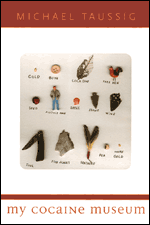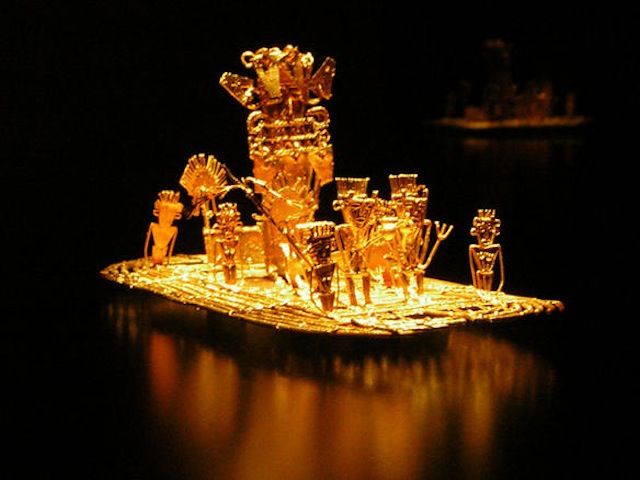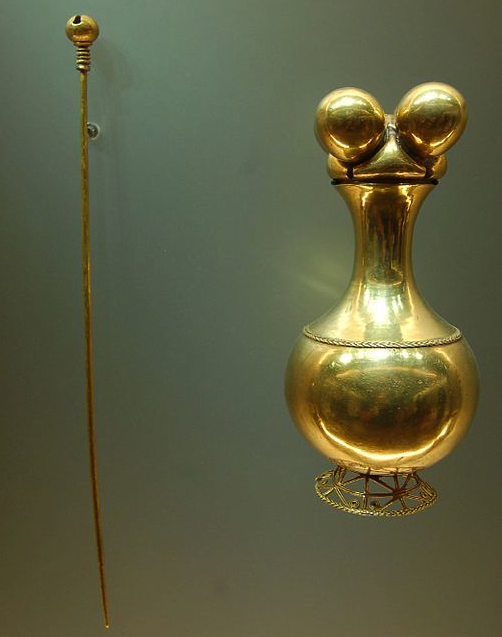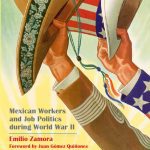By Jimena Perry
One of Colombia´s most important museums is the Gold Museum, located in Bogotá. It is part of the Bank of the Republic, a state-run central bank. The museum houses approximately 55,000 gold pieces, most of them belonging to Pre-Columbian cultures, and aims to preserve the country´s heritage. Perhaps the most intriguing object on display is the world famous Poporo Quimbaya, a device used by indigenous cultures to store the lime they mixed with coca leaves for chewing. This was the first object acquired by the museum’s directors and has been on display for more than 60 years.
In 2003, anthropologist Michael Taussig, known for his unconventional ethnographic writing, published My Cocaine Musuem, a controversial analysis of the Gold Museum. The book was based on his conversations with the director and museum staff as well as analysis of the collection and its presentation. Taussig´s book uses the Gold Museum as a case study to reflect on what museums should do and raised significant criticisms regarding the practices he saw at the Gold Musuem. While the book upset the museum’s team, it is now considered an important reflection on how museums work.
 One of Taussig’s major criticisms was the key omissions he noticed in the story told by the Gold Museum. Taussig drew on his own research into the black communities located in Timibiquí in the country’s southwest. These communities were formed by black former slaves who settled in Timbiquí and began extracting gold from mines and panning it from rivers there. Despite the strong connection these communities had to gold, the museum made no mention of them.
One of Taussig’s major criticisms was the key omissions he noticed in the story told by the Gold Museum. Taussig drew on his own research into the black communities located in Timibiquí in the country’s southwest. These communities were formed by black former slaves who settled in Timbiquí and began extracting gold from mines and panning it from rivers there. Despite the strong connection these communities had to gold, the museum made no mention of them.
Taussig also criticised the museum for focusing too heavily on objects without providing the rich texture that brings understanding to different cultures. For example he highlights the relationship that some indigenous peoples have with objects such as poporos (not all of them are made of gold) and the lime they carry in them. He argues that these objects are revealing of a different life and culture that needs to be contextualized in order to be understood and respected. If, for example, there is a display of the object itself, without some kind of history behind it, the cultural meanings of the pieces might disappear entirely. Along these lines, continues Taussig, museums have become boring places that fixate on objects, they are “dead and even hostile places for bored bourgeoisie.” For instance, since poporos store lime for chewing with coca leaves, they have a green layer of dry spit in their upper part. Why wouldn’t a museum exhibit these poporos? Why is only an asceptic, clean, gold poporo appropriate to represent the cultural practice of coca chewing and why are the black people who extract gold totally absent from museums?

This old Muisca tradition became the origin of the El Dorado legend. This Balsa Muisca (Muisca raft) figure is on display in the Gold Museum, Bogotá, Colombia. Via Wikipedia.
In order to bridge these gaps, Taussig imagines a cocaine museum, not to exalt coke as a national Colombian identity marker, but as the object at the center of an issue that can be traced historically and that cannot be comprehended if it is only seen as an object. Taussig emphasizes the relationship among gold, coke, and cocaine. Along these lines, the author envisages a museum that does not separate nature from culture, where objects are not decontextualized and where the pieces tell stories that appeal to the people who use, elaborate, and see them. The scholar´s idea is that his cocaine museum portrays a story of things told by objects. For the anthropologist, My Cocaine Museum is a place where history and ethnography converge, contextualizing gold and its relationship with coke. It is even possible to say that he makes the following equation: gold is to slaves as coca to Indians and cocaine to the present.
Not all Taussig’s arguments are persuasive. Why should a historical museum, such as the Gold Museum, which aims to focus on the past, have the duty to also display the present? Should all msueums do the same thing? What are their purposes? How are they useful to society? Taussig´s book raises these question and will make readers think more closely about the nature, function, and role of museums.
My Cocaine Museum, by Michael Taussig (The University of Chicago Press, 2004)
You may also like:
Jorge Cañizares-Esguerra reviews Netflix’s Narcos
Jimena Perry discusses two museums that represent the Colombian violence since the 1960s: the Hall of Never Again, a community-led memory museum in Colombia, and The Center for Memory, Peace, and Reconciliation, Bogotá, Colombia




